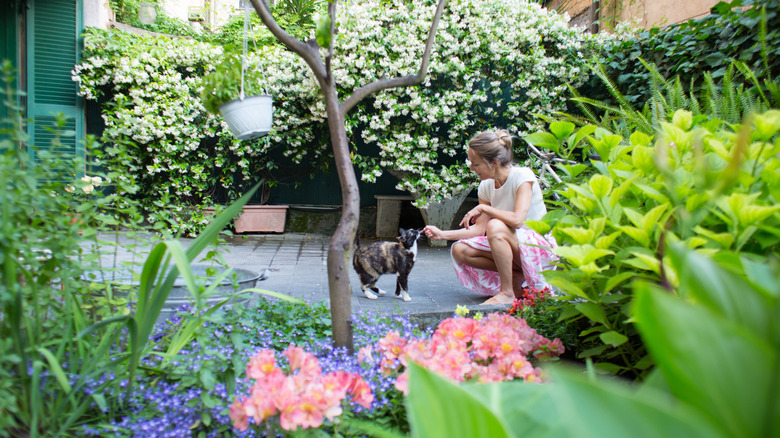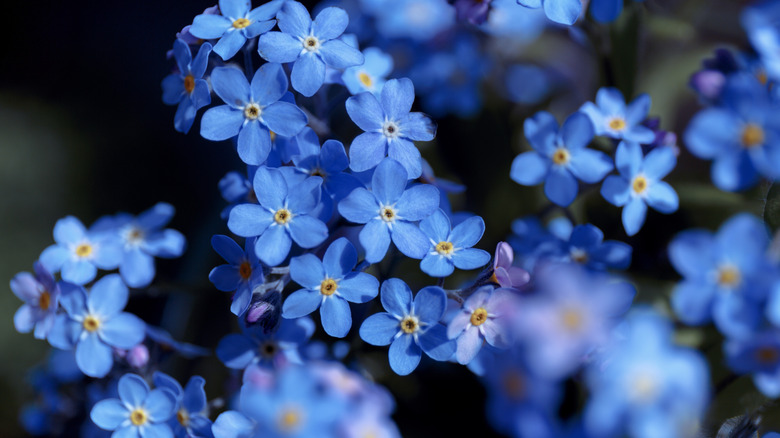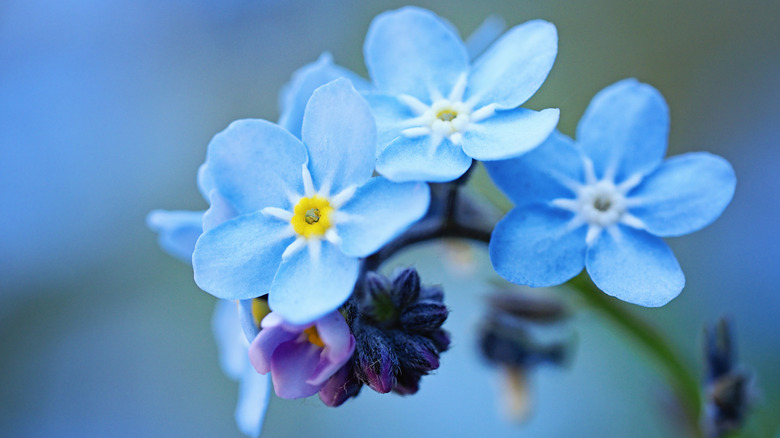Why You Should Give This Self-Seeding Perennial With An Odd Name A Chance
The idea of a plant called "scorpion grass" might not sound too appealing, but this perennial is a valuable addition to almost any garden. Known more commonly as the forget-me-not (Myosotis sylvatica), this beautiful plant earns its peculiar name from its distinctive, coiled flower stalks, which look like a scorpion's tail before they unfurl. These delicate, blue flowers bring numerous benefits to a garden ecosystem.
Forget-me-nots are on a long list of self-seeding flowers that effortlessly fill a yard with color, returning year after year with minimal effort, which makes them a low-maintenance choice for gardeners. Their blooms provide a consistent and important food source for pollinators like bees and butterflies. However, the plant's quick growth can be a double-edged sword, since forget-me-nots can spread aggressively if you let them. Understanding both the beauty and the potential drawbacks of this flower is key to successfully incorporating it into your landscape.
The benefits of growing forget-me-nots in the garden
Scorpion grass affords many benefits to the local ecosystem, with their tiny blossoms providing a consistent and easy-to-access food source, attracting pollinators like bees and butterflies. The yellow center of the flower acts as a guide, showing bees exactly where to find the pollen. By planting them, you're helping these beneficial insects find the food they need to survive. When used as a groundcover, forget-me-not's dense growth can help suppress competing weeds, contributing to the overall health of the garden.
One of the most appealing things about scorpion grass is its self-seeding nature, which lets the flowers fill your garden with color without much effort on your end. Once the flowers fade, the plant disperses its seeds, which will germinate and grow into new plants the following season. This means you get continuous flowers without having to replant. The plants spread to fill in gaps, creating a carpet of blue that can soften the edges of walkways or grow under taller shrubs and trees. Forget-me-nots are also remarkably hardy. They like cool, moist soil and are hardy in USDA zones 3 to 9. You can find out if your growing zone has changed to make sure they'll thrive in your area.
Managing forget-me-nots' aggressive spread
Forget-me-nots' prolific nature can cause problems. Since they reseed so easily, they can quickly spread through your yard and outcompete other plants. If they escape from your property, their ability to form thick mats of growth can overrun native plants, which may be a reason for concern in some locations. For example, in Wisconsin, this plant is listed as invasive; growing it there could cause harm to local ecosystems. It's important to plant with care and check your local regulations to make sure you can enjoy their benefits without them taking over your garden. You can learn how to keep invasive plants from spreading in your garden to help manage their growth.
A few simple tips can prevent forget-me-nots from taking over your yard. Since they have shallow roots, they're relatively easy to remove by hand-pulling or hoeing, especially if they're growing in a small area. That said, you must ensure that no parts of the roots are left behind if you want to keep the plants from resprouting. If their spread is really getting out of hand, the most important thing is to remove the plants before they have a chance to release their seeds.


